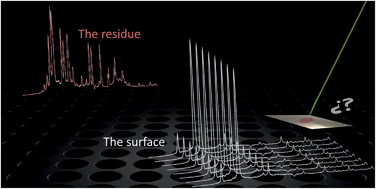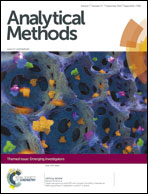A spectral sieve-based strategy for sensing inorganic and organic traces on solid surfaces using laser-induced breakdown spectroscopy
Abstract
Laser-induced breakdown spectroscopy (LIBS) has been used in recent years as a powerful tool for diagnosing dangerous residues on a variety of surfaces. While not itself straightforward, the task becomes much simpler when scenarios are custom designed. A more difficult question then arises when the scenario is unknown. The inherent ambiguity within the spectral resources gathered from this type of scenario presents a challenge to the analytical power of LIBS. Since no tools are available for confident identification of the optical emissions of the surface, the residue, or both, a novel method is now proposed based on sieving the spectral data. The strategy is based on threshold splitting of the spectral responses in the dataset using linear correlation measurements. The output of such splitting allows the emission spectrum of the surface to be predicted, thereby identifying uncorrelated emission signals with the potential residue. The strengths and weaknesses of the methodology are critically discussed. The suggested method allows accurate identification of the emission spectrum of the surface in scenarios for which 60% of the spectral resources correspond exclusively to a ‘clean’ surface. In the case of scenarios that are complex, in that the chemical composition of the surface and the residue are similar, the use of emission intensity ratios instead of considering the entire spectrum improves the methodology. The results presented suggest that this approach gives greater selectivity to the LIBS technique in the assessment of unknown targets in the recognition of explosives.

- This article is part of the themed collection: Emerging Investigators

 Please wait while we load your content...
Please wait while we load your content...